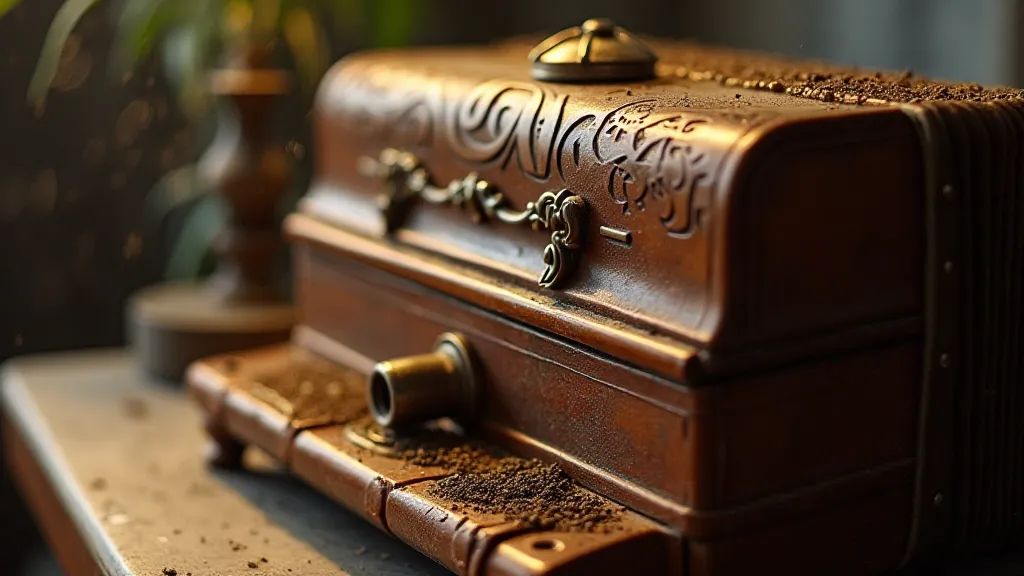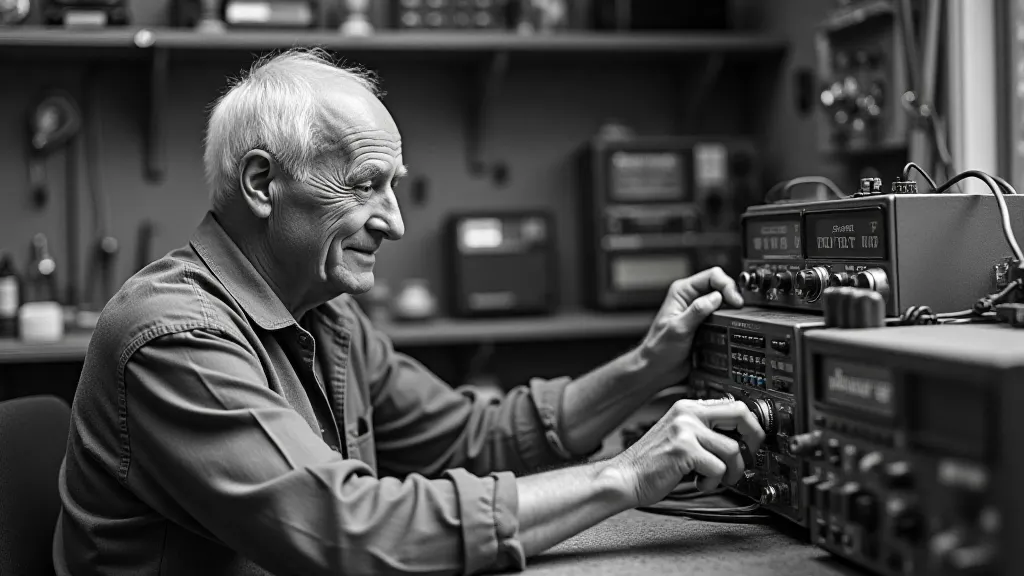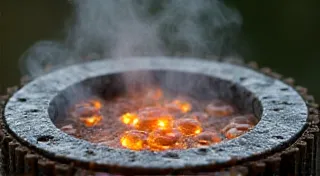Static and Stories: Listening for Humanity in the Radio Spectrum
There's a peculiar magic in the hum of a radio, a sense of connection that transcends geographical boundaries and even, in a profound way, the passage of time. It’s a magic I first encountered not with a fancy modern rig, but with a battered, antique accordion my grandfather gifted me. The bellows exhaled a breathy, melancholic tune, a faded echo of European dances and family celebrations lost to the years. That feeling – that sense of connecting with something older than myself, a conduit for memories and human experience – is what drew me to ham radio, and what compels me to build these transceivers, these little portals to the world.
Building a ham radio transceiver isn't just about soldering components and understanding frequencies. It’s about engaging with a legacy – a legacy of pioneers who sought to connect, to share information, and to bridge divides. Think about Reginald Fessenden, transmitting the first audio radio signal on Christmas Eve, 1906 – voices and music carrying across the Atlantic, a moment of unparalleled wonder and a testament to the potential of radio communication. Or the dedicated individuals who used radio to relay messages during wartime, often risking their lives to provide crucial information.

The Craftsmanship of Connection
That sense of legacy extends to the physical act of building a transceiver. Modern technology can feel ephemeral, almost intangible. But when you’re meticulously bending wires, adjusting coils, and patiently soldering components, you're participating in a tradition of craftsmanship that’s deeply satisfying. The tactile nature of the process, the smell of solder, the feel of the components in your hand – it all fosters a deeper appreciation for the technology. It's a deliberate act, a conscious effort to understand the principles at play. The entire process, from understanding the schematic to the final test transmission, is a journey, and for those eager to dive deeper, exploring resources like “From Blueprint to Broadcast: A Step-by-Step Journey of Transceiver Creation” can be incredibly beneficial. And, much like restoring that antique accordion – carefully cleaning, repairing, and preserving its beauty – building a transceiver is a form of preservation, a way of keeping these skills alive.
I remember the first time I held a hand-wound coil. It wasn’t perfect, the turns weren’t uniform, but it was *mine*. I had painstakingly wound it, guided by a schematic and a healthy dose of nervous excitement. That feeling of ownership, of having created something functional and meaningful, is something no purchase can replicate. The imperfections, in fact, are part of the charm. Many builders embrace that “clockwork heart” – that beauty born of imperfection – in their analog fabrication, a concept further detailed in "The Clockwork Heart of a Transceiver: Embracing Imperfection in Analog Fabrication”. The same careful attention needed for restoring a bellows seal on that accordion—careful cleaning, delicate repair—applies to ensuring a clean, stable antenna connection.
Ethical Considerations: Voices on the Air
But this power to communicate, to connect across distances, carries with it a profound responsibility. The radio spectrum isn't an unlimited playground. It’s a shared resource, governed by rules and regulations designed to ensure fair access and prevent interference. Being a ham radio operator isn’t just about transmitting signals; it's about being a responsible steward of that shared resource.
This responsibility extends beyond merely adhering to licensing requirements. It’s about considering the impact of your transmissions. Are you disrupting other operators? Are you using appropriate power levels? Are you engaging in respectful communication? The ham radio community thrives on camaraderie and mutual respect. Rude or disruptive behavior, intentional interference, or broadcasting inappropriate content can damage the reputation of the entire hobby. Troubleshooting issues – from signal degradation to complete silence – can be frustrating, but remembering that you’re part of a community built on sharing knowledge and helping each other overcome challenges is essential. It’s a testament to the resourcefulness and determination of builders, and it’s often necessary to delve into the intricacies of component behavior to identify the root cause. Understanding the interactions between the materials you use, and the effects of heat and vibration on these components is another layer of the craft; "The Alchemy of Components: Transforming Raw Materials into Radio Voices" explores this intriguing aspect in more detail.
Privacy is another crucial consideration. While ham radio communication is often encrypted, it’s important to be mindful of the information you transmit. Avoid sharing personal details that could be misused. Similarly, be respectful of the privacy of others. Don't eavesdrop on conversations or attempt to decode transmissions without permission. Even seemingly innocuous signals can contain unintended information, and the potential for misunderstanding or misuse is always present.
The beauty of ham radio often lies in its ability to connect people from diverse backgrounds. It’s a forum for sharing ideas, learning from each other, and building bridges across cultures. Maintaining a respectful connection with fellow operators, regardless of their location or operating style, is essential to preserving the spirit of amateur radio. Sometimes, the signal is faint, garbled, or interrupted by static, requiring ingenuity and patience to decipher. That persistent hum of the radio, that crackle of static, can be a constant reminder of the challenges and rewards of this unique form of communication.

The Hum of Humanity
The appeal of building a simple ham radio transceiver isn’t solely about technical mastery. It’s about something deeper – a yearning to connect, to understand, and to be a part of something larger than oneself. It’s about listening to the static, not just as noise, but as a symphony of human voices, each carrying a unique story. The act of carefully winding coils, adjusting capacitors, and connecting antennas is a deliberate process – a commitment to craftsmanship and a desire to create something tangible and meaningful. The rewards aren't just technical; they are deeply personal and profoundly human.
The quiet hum of the radio, the crackle of static, the occasional voice breaking through – these aren’t just sounds; they are echoes of humanity. They are reminders that we are all connected, regardless of our physical location. They are invitations to engage, to learn, and to share. They are, in their own way, as resonant and meaningful as the melancholic strains of an antique accordion, whispering tales of generations past and promising connections yet to be made. The pursuit of clear signals often involves carefully analyzing the environment – identifying sources of interference, optimizing antenna placement, and adjusting power levels. It’s a blend of technical skill and intuitive understanding.
This act of building, of creating your own portal to the radio spectrum, is a return to first principles – a reminder that technology, at its core, is about communication and connection. And that, more than anything, is a powerful and deeply human endeavor. It's about more than just sending and receiving signals; it’s about fostering a sense of community, preserving a tradition of craftsmanship, and celebrating the enduring power of human connection. It is a journey of discovery, both technical and personal, and it’s a journey that’s well worth taking. Even when faced with seemingly insurmountable challenges – a failed component, a miscalculated value, a stubbornly elusive signal – the spirit of perseverance and the joy of creation are what drive us forward. The challenges are opportunities for learning, and the successes are testaments to our ability to create something truly remarkable.






